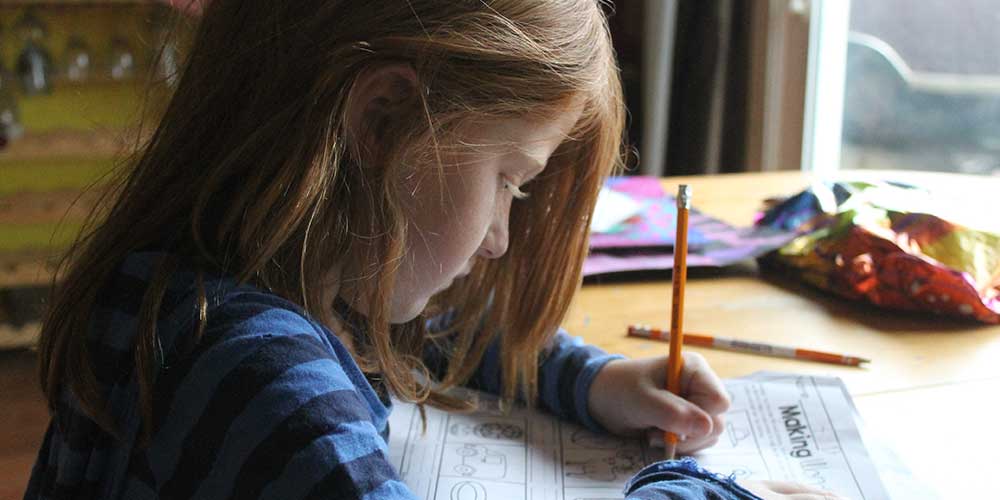Chapters
2. What are the signs of dysgraphia?
3. Is there any treatment for dysgraphia?
4. What can I do to help my child’s dysgraphia at home?
5. What can be done to help dysgraphia at school?
Learning to write is a crucial skill for children to learn, and some find the process more difficult than others. There can be a variety of reasons for this, but one may be that your child has dysgraphia. Read on to find the answers to some of the most common questions about dysgraphia, find out how to recognise the symptoms of dysgraphia and support your child..jpg?width=1000&name=kreatives-schreiben-mutter-mit-kind%20(1).jpg)
What is dysgraphia?
The term dysgraphia refers to having difficulty with transcription skills (writing with a pen or pencil) and the condition strongly affects a child’s handwriting. ✏️ Dysgraphia is no longer classified as a learning difficulty, but is still a recognised and understood condition.
Like dyslexia or dyscalculia, dysgraphia is a learning difference. People with these types of learning differences learn in a different way to others, and for kids this can be confusing or frustrating.
It is important to remember that dysgraphia is not related to intelligence but can often occur alongside ADHD and other learning differences (such as dyslexia or written expression disorder).
What are the symptoms of dysgraphia?
The main indicators of dysgraphia are difficulty in writing and messy handwriting, but there are other symptoms of dysgraphia too. Look out for your child struggling with the following:
- Formation of clear letters
- The use of a pen or pencil in a controlled way
- Keeping words in a straight line
- Spacing letters correctly
- Writing grammatically correct sentences
- Forming words without skipping letters
Don’t forget, children will have messy handwriting while they are still learning, so don’t worry too much about these signs early on - there can be other causes of writing difficulties. 📓 If a child is slow in writing and you notice that their difficulties continue, start to take notes on the specific areas in which they are struggling.
Is there any treatment for dysgraphia?
Yes, there is support available for kids who struggle with dysgraphia. In order to get started with this, it’s important to have a proper dysgraphia diagnosis. ⚕️ Speak with your child’s teacher to make sure you have a clear idea of what your child finds particularly difficult. Make an appointment with your GP so they can rule out any other causes before referring you to a psychologist.
The psychologist will give your child some tasks to perform that test motor skills and may get them to demonstrate their writing abilities. They may then recommend that your child tries occupational or physical therapy. These will focus on improving the fine or general motor skills your child struggles with.
What can I do to help my child’s dysgraphia at home?
There are several things you can do at home to support your child with dysgraphia.
Here are some top tips that will help kids with dysgraphia:
- Provide them with paper, such as graph paper, which makes it easier to get regular sizing and spacing of letters.
- Allow them to use a computer instead of pen and paper to build their typing skills.
- Use writing grips on pens and pencils to improve comfort. Don’t hesitate to try out different shapes, styles and materials.
- Set short writing tasks and try to make them fun for your child using colours, stickers, photos and similar materials.
- Get them a stress ball to squeeze to improve the muscles in their hand, and teach them ways to relieve stress before writing. This could be rubbing their hands together quickly or some light finger stretches.
Most importantly, you should talk to your child about their dysgraphia and praise them when they are trying hard. 🤗 Don’t let them feel downhearted and offer them positive reinforcement at every stage.
What can be done to help dysgraphia at school?
Your child’s school will be able to help you and your child find solutions that work well for your child. 👨🏫
Our key suggestions include:
- Communicate well with your kid’s school. Have an ongoing conversation with your child’s teacher(s) about where your child is struggling.
- See if there are any special education services available and apply for assessments if needed.
- Request that your child is able to use a computer whenever possible and has extra time when it comes to exams or writing assignments.
- Use a dictaphone or electronic note-taker to reduce the amount of writing during class. You may also be able to request pre-made copies of any class notes.
Keep in mind that if your child is struggling with dysgraphia, there’s a lot of help and support available that will help them learn and perform well in school despite this issue. For kids with dysgraphia, 1-1 tutoring sessions with skilled tutors can be very beneficial in helping them learn. In fact, online tutoring may be better than in-person sessions. Book a free trial session with us today! 🚀










